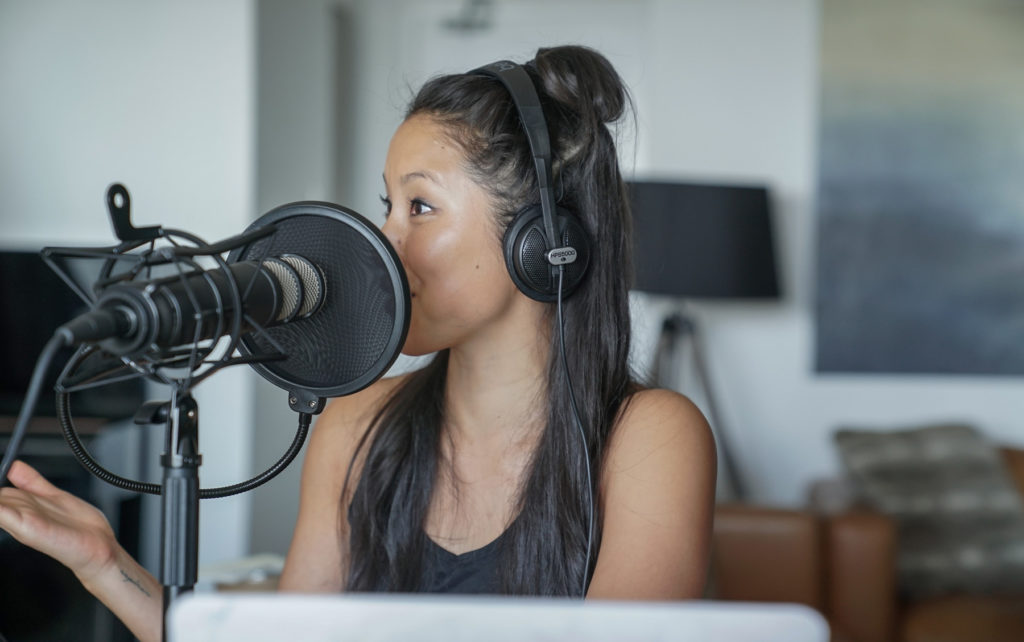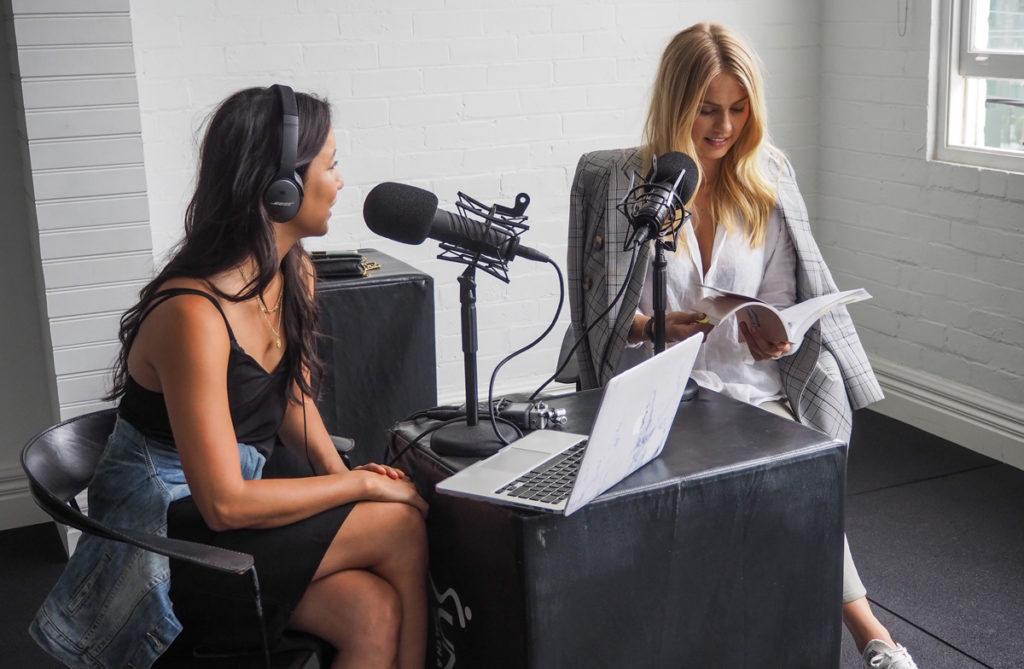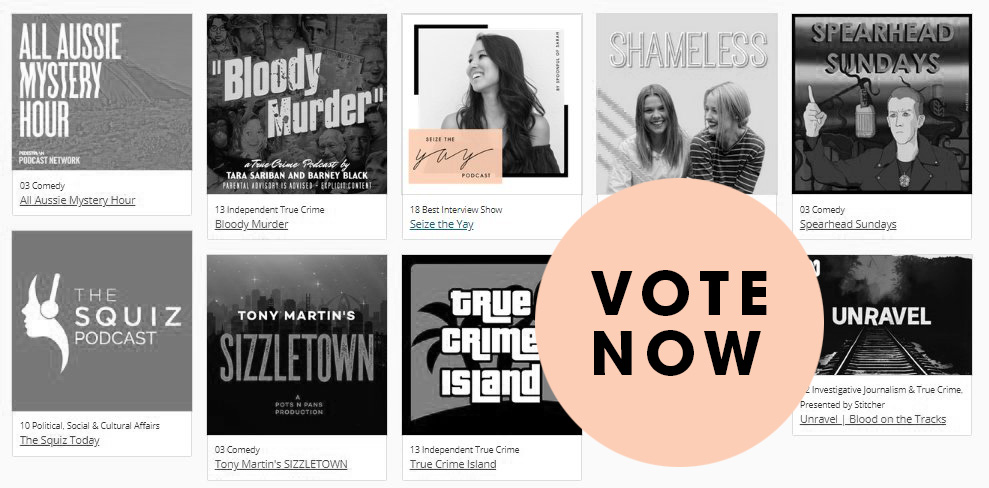As many of you know, I spontaneously started a podcast last year called Seize the Yay as part of my own personal project to do more things that bring me joy and happiness (or, in other words, that make me “yay”). If you’ve heard any of the episodes before, you’ll know that I’m fascinated by the emphasis we give to our jobs, productivity and output and how easily we seem to have forgotten to do activities purely for the enjoyment they bring. We always introduce ourselves by name and occupation before even getting close to our hobbies or passions, which tell you much more about a person’s essence… ANYWAY, I digress… so, I started the podcast, like Matcha Maiden, for personal reasons and it just happened to have resonated with people more strongly than I expected and has grown well beyond my hopes and dreams already. I can’t say how beneficial it’s been to all areas of my life (including work) to integrate something into my life that’s purely for the pleasure without any deadlines, stakeholders or financial implications.
SO, if you’re thinking about doing a podcast, but are worried about it whether any one will listen, let me point out a few key things:
- It actually doesn’t matter if anyone else listens, because the process itself is ENORMOUSLY enjoyable in itself and I’ve learnt so much from the conversations with my guests that it wouldn’t have mattered if anyone tuned in our no.
- It doesn’t cost much at all to start and, while it seems overwhelming, once you get into your groove it’s really quite simple. Then you can upgrade your gear as you grow and get more comfortable with everything.
- Podcasts are much more democratic than social media has become – you barely get any stats about your “followers” or subscribers (which can be frustrating, but which also means you don’t get distracted by catering to what’s “popular” but just focus on actually creating great content). You can get your listens per episode, see reviews and there are charts that rank you against other podcasts, but you never have “followers” which is quite liberating!
- Because you’re focusing on creating great content, you’ll probably get more listeners than you expected anyway. I get so many people following my Instagram from the podcast than the other way around, which is SO weird. I think it’s easier to find new people in podcast land than it is on social media these days. I have no algorithm-related or scientific explanation for that, it’s just what my brain has decided is the case from my experience so far… take it or leave it haha!
I’ve had a lot of people ask what equipment I use and how I got started and I’m SO glad that a few of you are considering starting. I figured it would be easier to just write it all down here so it’s in one place to send everyone.
NOTE: I started off with quite an advanced set up because Nic helped me research everything and he’s an incredible tech head. BUT you absolutely don’t need to start with what I have, you can definitely start smaller and build up. AND you can do it without knowing ANYTHING about sound quality or editing or anything – I started off absolutely CLUELESS but Google teaches you everything you need to know. This is just how I do it, but I have no idea what the industry norm is (if there is one). It’s definitely overkill, so you can do it much more simply (and cheaply) if you want to.

WHAT DO YOU NEED TO RECORD?
The main thing is obviously your recording equipment and you can go from very casual to super fancy. It also depends if you’re recording mostly in person or online. If you’re recording online (and I’ll explain how in the next section), a lot of people simply use their Apple headphones or their computer microphone, which are actually really good quality these days. I record in person very often and I really wanted a high sound quality from the beginning, so I use:
- 2 x RODE RODPROCASTER BROADCAST DYNAMIC MICROPHONE
- RODE ROUND BASE DESKTOP STAND to stand them up (very heavy duty, I’ve got smaller plastic ones for travel)
- PROEL MICROPHONE CABLE XLR-M TO XLR-F 1M to plug them into my recording device
- 2 x generic pop filters from Ebay to cover the microphone to protect from the aggressive sound of “p” in certain words
- 2 x generic shock filters from Ebay that go around the microphone to protect from any knocks or bumps
You could definitely get away with just one single microphone and a stand though if you wanted to keep it simple. The Rode microphones are really good quality so they could pick up two voices if you wanted to share one with a guest.
HOW DO YOU RECORD?
This is where you can either record directly into your computer (which obviously saves money) OR into a recording device so that you don’t need your computer with you (then load the files onto your computer later to edit). I know quite a few other podcasters who skip this and just get an adapter that plugs their microphone straight into their computer. There are then several different programs to record the audio on your computer and I believe GarageBand is a super easy, free option (which you can then also use to edit and export your episodes).
I decided to use a recording device though, so I use a:
- Zoom H5 HANDY DIGITAL RECORDER
This records onto an SD memory card and uses A4 batteries. I plug the microphones directly into it and this model takes 2 microphones. Again, some podcasters only use one and share it with their guest. The Zoom H5 also has an in-built microphone so you could skip microphones altogether if you want (but I prefer the sound quality of separate microphones per speaker). I love using this one because you don’t need to have it connected to your laptop or a power point to use. I plug my headphones directly into it too so you can hear exactly what’s being recorded (i.e. if there’s a distracting sound in the background being picked up that the microphone can hear louder than your ears do).

HOW DO YOU EDIT AND SAVE EPISODES?
Again here you can go simple or fancy. Some just use GarageBand which is free and lets you upload your audio and then chop and cut things where you want. I use Adobe Audition because we already had an Adobe subscription, which allows much more fancy effects but I don’t use them at ALL. I literally upload my audio files from the SD card to my computer, import them into the program and then chop and change the audio like you would cut and paste a long paragraph in Word.I sometimes increase the volume of one track if it’s quieter than the other. That’s one good thing about two microphones is you capture two audio files if your voices are different volumes. I add my intro and music and then an outro at the end and then export each episode as one single file. I then BACK UP EVERYTHING at least twice in different places, in case anything gets lost!!! I used YouTube videos to work out how to do this and had ZERO clue or experience with editing beforehand – it’s much simpler than you think.
WHERE DO PODCASTS LIVE?
This is the part I found most confusing at the beginning. What do you actually do with the audio file when it’s finished?
Firstly, you have to have an Apple Podcasts account. That’s easy enough to set up. Then you have to let Apple know where to find your episodes, so where do they live? They live in what’s called an “RSS feed” kind of like a newsfeed where all your episodes are uploaded and Apple pulls that information in so they’re accessible on the Podcasts App and iTunes. Other platforms can also pull information from your RSS feed, like Stitchr for example, which is an Android based platform so people who don’t have iPhones can also listen.
That way, you don’t have to upload every episode to every platform you want your podcast to be available on. You just provide the link to your RSS feed to all those platforms and they can access all your episodes. So for example, Seize the Yay is on iTunes, Stitchr AND Spotify so that listeners have some options. And when I want to find out how many times each episode has been listened to, it gives me the total across all of those platforms instead of having to add up each separate total.
So how do you create an RSS feed? This comes from where your podcast is “hosted”. That’s where you upload the audio file, choose its name, description, tags etc like a dashboard. I know, confusing right? You’ll get an RSS feed link from your host that you can then share with ITunes, Stitchr, Spotify etc… I use an amazing free host called Whooshka that I find super easy to use. It shows you how many listens each episode receives and also the reviews you’ve earned so far. You can schedule episodes in advance and also access some insights into your listening trends.
WHAT NEXT?
Get recording!!! This probably seems way longer and more complicated than I meant it to and probably isn’t the conventional way to do things, I’m totally winging it. In the past, I’ve just copied and pasted the equipment list in an email for people, so it can definitely look more simple without all my over-explaining. I just wrote out what I would have wanted to read when I first started. If you have any questions, don’t hesitate to email me – [email protected] – and I’ll do my best to answer.
If you haven’t had a listen to Seize the Yay yet, I’d love to know what you think. At the moment, it’s in the top 10 for the Australian Podcast Awards and there’s still a few weeks left to vote, so if you get a moment PLEASE VOTE, I’d be eternally grateful for the support.
Hope you’re seizing your yay! xo


Do you have any tips on where to get great intro/outro music to use. I’m just starting my podcast and have recorded my first episode but am struggling to find royalty free music to use.
Hey lovely! Oh congratulations!!!! Woohooo!!! A great one to try for royalty free music is Bensound 🙂
How do you do your audiograms that you then feature on instagram?
Hey lovely! I use photoshop to create them. I found a free animated soundwave and then layer it on top of the image. You can use the “Timeline” function in settings to export it as a video 🙂 Let me know if you need more help!
Hi Sarah! Thanks so much for sharing. Would you by anychance to a post on how you structure your interviews/conversations. I have all the ideas but not quite sure where to start ????????♀️
Hey Jess!!! Ahhh yes, it’s a tough one when you first start out. For me, I have three main sections based on the overall theme of the podcast – “way to yay” (the story of how each guest got to where they are), “nay to yay” (the challenges that get in the way of their happiness), and “play to yay” (what they do for fun when they aren’t in work mode). I guess it just depends on what your overall theme is. Do you want to shoot me an email with some more specific info and I can maybe help you form some ideas? I think it’s also important to be flexible too and go where the conversation takes you rather than sticking to a rigid structure – that could lead you to miss out on an awesome discussion just because it was a bit off on a tangent! xxx
This is unreal Sarah, I have been meaning to write to you for sometime, I know you don’t drink but have moved to France to learn the langauge (which I am sure you have tips on) and leave a corporate job in Sydney also so setup a business. Your podcasts are useful on morning walk routines, I just finished the one with ‘Nic’, wondering if he knows a family friend Carly Roger, an ex hurdler also. I used to work at Telstra so know Janine Allis from working on the Women’s Business Awards team. Thank you so much for this podcast guidance,how blessed and generous you are to take the time to share this. I am also a recovering perfectionist, with anxiety and love your favourite quote about doubt. I say Feel it and do things anyway. Thanks again Stephanie Eyles
Hey lovely! Thank you so much for your message. Yes he does know Carly! Small world!!! So glad you’re enjoying the podcast thank you so much for listening and taking the time to give such lovely feedback. And to be listening in France, one of my favourite places!!! Bonne chance cherie!!!!!
Another quick question… I am going to start off with the basic version of recording I.e into a microphone that plugs into my computer.
Some of my interviewees will be in Sydney and other parts of APAC (while I’ll be in Melb), what would they need to plug their microphone into to capture the audio or can it just be captured on my end?
Thanks in advance!
Oh my gosh I just found where all these comments have been going!! SO SORRY lovely!!! I use Youngblood it’s SO GOOD. Amazing coverage for a lightweight powder. xxx